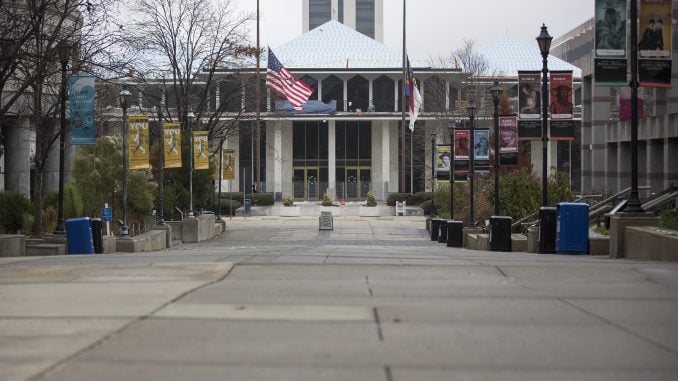
RALEIGH — Last week, the N.C. Department of Commerce released its annual rankings of the state’s 100 counties based on economic status. The report, required under state law, puts each of the state’s counties in a three-tiered scale based on unemployment rate, median household income, population growth and property values. A Tier 1 county is the poorest, a Tier 3 county is faring among the best in the state.
In this year’s report, six counties will change designations in 2018; some for the better, some worse. According to the Department of Commerce report, Lenoir and Perquimans counties in eastern N.C. will shift from a Tier 2 to a Tier 1 ranking. Forsyth County, around Winston-Salem, will change from a Tier 3 to a Tier 2 ranking. Beaufort at the coast and Caldwell county, northwest of Charlotte near Hickory, will move from Tier 1 to Tier 2 status. Granville County along the eastern Virginia line will shift from Tier 2 to Tier 3.
Making it a bit more complicated, small counties — those with fewer than 12,000 residents — are automatically, under state law, categorized as Tier 1. Those with 50,000 people with 19 percent under the poverty line are also automatically a Tier 1. There are also considerations in the formula to show a sliding scale of economic performance. The law calls for 40 counties to be designated as Tier 1, 40 counties to be designated as Tier 2, and 20 counties to be designated Tier 3.
One would think that a county moving to a Tier 3 would be good news. However, the system is not just an economic pulse check for the state government — the tier designations also play a role in determining eligibility for tax credits and grant programs administered through the N.C. Department of Commerce, including building reuse, water and sewer infrastructure, and the downtown revitalization Main Street program.
Tier designations also play a role in the state’s Job Development Investment Grant (JDIG) program which channels money to attract industry to a county. Under the programs, companies get more benefit or a higher tax credit for jobs created in a Tier 1 or 2 county than they do in a Tier 3.
“Updating the tiers doesn’t change the underlying problems in the report,” said Sara Neinow, principle program evaluator at the N.C. General Assembly.
Critics of the tier system say there are a number of kinks in the system, which was developed in the 1990s. It doesn’t account for counties with just a handful of prosperous towns and it puts prosperous towns at a competitive disadvantage. For example, Moore County is home to Pinehurst, an affluent golfing community with a posh history, fast growth and wealthier retirees. However, 15 percent of the county lives below the poverty line and it remains a Tier 3 county moving into 2018.
Camden County, near the eastern border with Virginia and the northern Outer Banks, ranks as the 20th wealthiest county in the state, but its population of 9,000 people automatically make it a Tier 1.
“It’s made the assumption that if you are a small county then you are an economically disadvantaged county, and that is not always the case,” said Nienow.
In Tier 3 Lincoln County, Rep. Jason Saine (R-Lincoln) says the system is antiquated, created to cover up bad policy.
“Our performance locks us out of the same economic packages that our neighboring counties have because they are Tier 2, and companies know this,” said Saine. “When they are looking around for a home, the executives will move to my county because they love what we are doing, what the school board is doing, what the county commissioners are doing; but they’ll put their facilities in a neighboring county, and it’s not really fair to us because the tier system rewards the wrong things.”
The Joint Legislative Economic Development and Global Engagement Oversight Committee is reportedly planning to examine this issue in the coming months.
“Commerce is just doing what they are directed to do,” said Nienow. “This short session is where legislators can have a thoughtful discussion about what is the usefulness of the tier system and is there a better way to determine the distribution of resources so they are most effective.”
According to a report released in 2015 by the General Assembly’s Program Evaluation division to the Joint Legislative Program Evaluation Oversight Committee, Tier 2 counties benefitted most from programs using the system to determine resource distribution. In 2015, state programs using the tier system distributed $71.4 million, and $51.6 million of that went to Tier 2 counties. Tier 1 counties received the second most at $16.9 million, and Tier 1 counties received $2.7 million through the state programs.
The N.C. Department of Commerce did not respond to requests for comment on this report.


